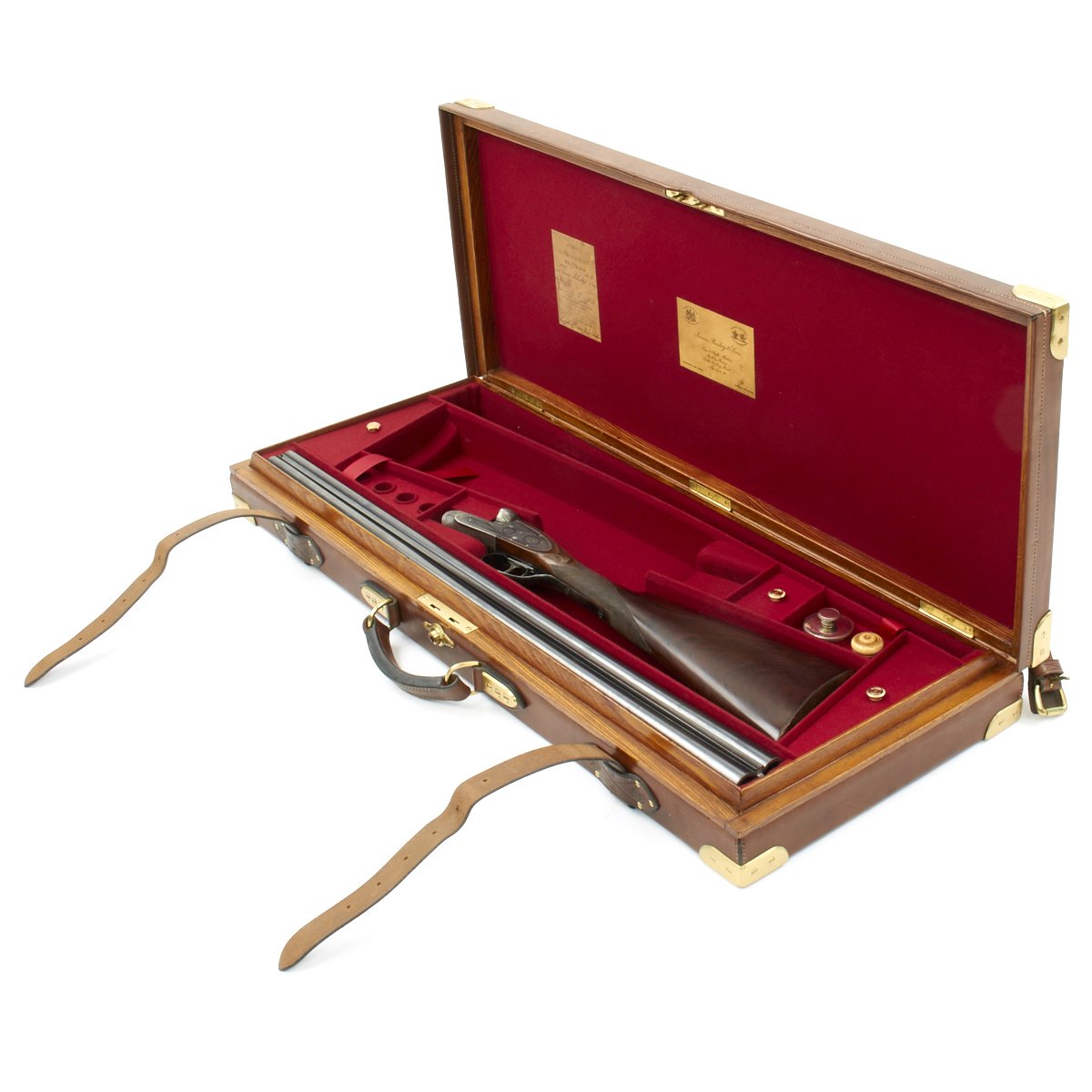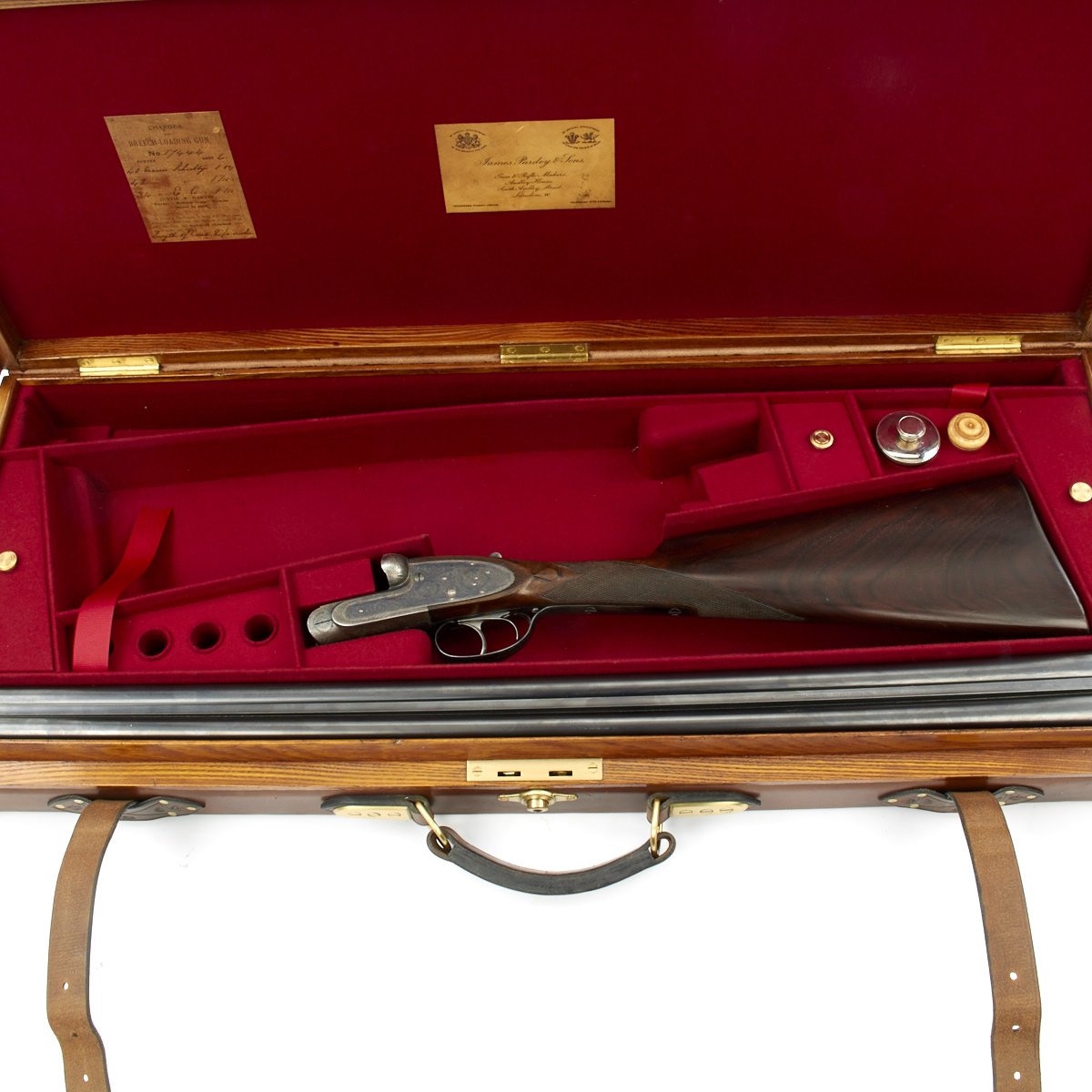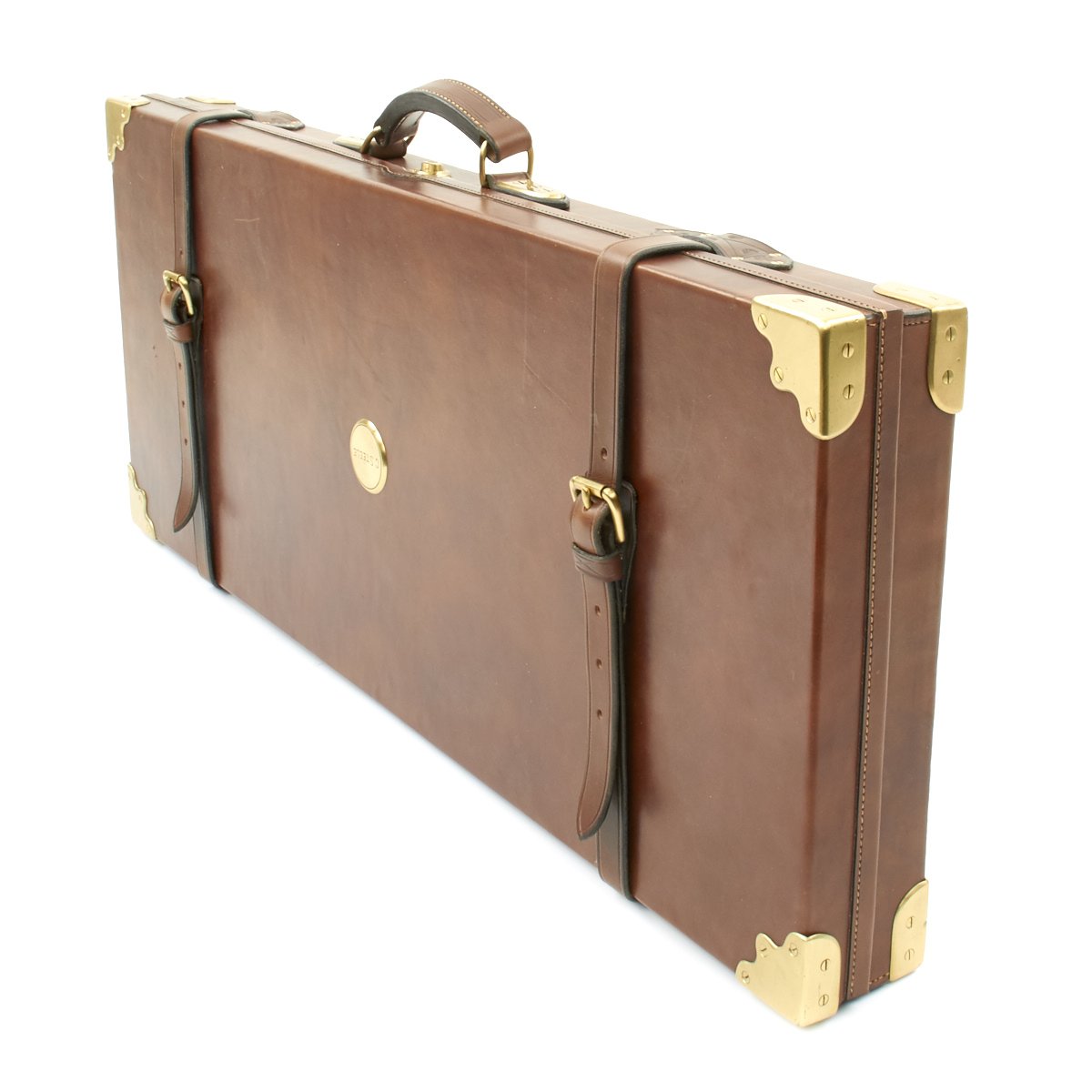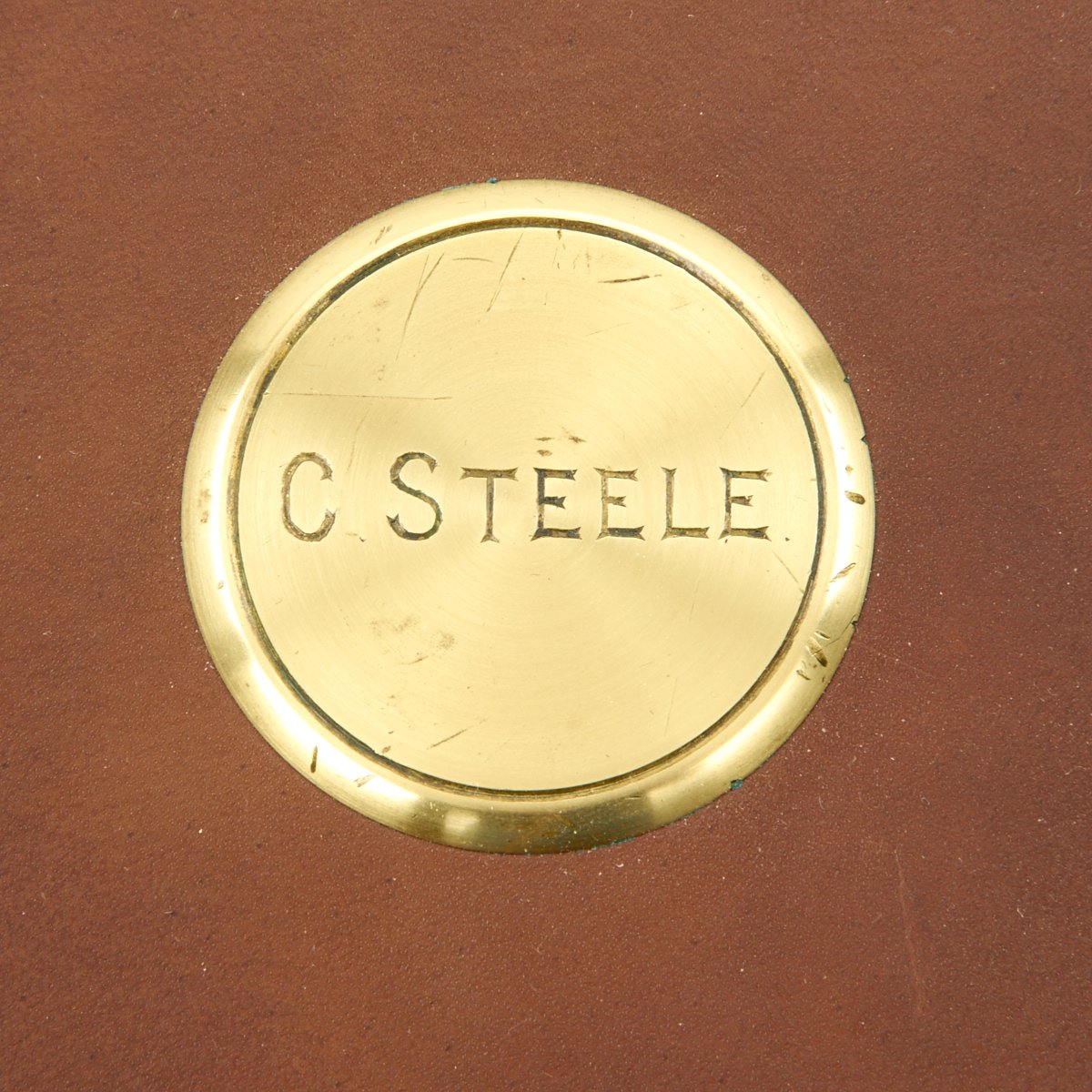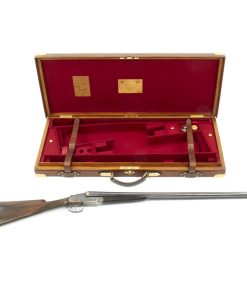Original English 1893 James Purdey Best Side by Side Sidelock Ejector Game Gun with Original Case Named to Charles Steele Original Items
$ 14.995,00 $ 3.748,75
Original Item: One-of-a-kind. Original Item: One-of-a-kind. This is gun #2 of a matched pair. The location of Gun #1 is unknown and heard lost or destroyed. This incredible example was made by Purdey in 1893. The engraving on it is simply fantastic. It was most likely cut by James Lucas. From 1855 to 1915, Lucas was Purdey’s head engraver, and he helped to develop the fine, tight scroll work that became the “rose & scroll” engraving pattern for which the best-quality British doubles are known for.
12 Guage. 2-1/2″ Chambers. 30″ inch barrels are engraved James Purdey & Sons, Audley House, South Audley Street. London. and Made of Sir Joseph Whitworth’s Fluid Pressed Steel on narrow concave rib. Barrel flats are stamped with London black powder proofs and Guage. Bottoms of barrels are stamped with serial number 15112. Tube numbers 14849 and 14850 are on loop. Beesley patent self-opening action features automatic safety (SAFE inlaid in gold), bushed strikers, engraved arrow head tumbler end cocking indicators, and double triggers. Action is engraved in typical Purdey house style rose and scroll. Engraving is exceptionally fine and well detailed, most likely by J. Lucas, head engraver. “J. Purdey & Sons” is on each lockplate, and “Purdey’s Patent” is on bottom of action. Scroll engraved trigger guard has serial number 15112 at grip. The ejection lever us also exceptionally engraved and personalized with CS for Charles Steele.
Well streaked and lightly figured walnut straight grip buttstock. Classic drop points and point pattern checkering are at grip, and a round brass escuthchen is on toe line with #2 engraved. Matching splinter ejector forend with Anson release and marked with serial number 15112.
Original makers oak and leather case with brass corners and central circular medallion engraved C. Steele, is lined in scarlet cloth. Original paper Purdey label and the original charge card for this gun, are on the inside of the lid. Case contains tools and parts. The case is original but was expertly restored at great expense by Huey Gun Cases in 2016.
Overall Condition of the gun is Excellent. Barresl retain nearly all of what appears to be their original blue, with some slight silvering and thinning from normal hand wear. Action and lockplates retain nearly all of what appears to be their vibrant origing case hardening color, silvering on beads and fences. Engraving is very sharp and clear. Top lever and trigger guard retain most of their origing bright blue, silvering at thumbpiece and grip. Stocks retain nearly all of an old oil refinish, grain open. Sharp edges are slightly rounded, checkering is crisp. Bores are excellent with a hint of frosting toward breech ends of both barrels. Action is tight.
Charles Steele (1856-1939) was a partner at J. P. Morgan & Company, and a partner in the law firm of Seward, Guthrie & Steele. He was also involved in the affairs of the Metropolitan Opera and the Protestant Episcopal Church of America, and served as senior warden of both St. Thomas Church, New York City, and the Church of the Advent, Westbury, N.Y. A great lover of church music, Mr. Steele studied organ with Dr. T. Tertius Noble at St. Thomas, and in 1922 he contributed $200,000 for the purchase of two houses so that the choir school could have a permanent home. Three years later, in 1925, Steele contributed another $300,000 to endow the choir school. Charles and Nannie Steele also maintained a home in Westbury, N.Y., where an Aeolian organ (Op. 1126) was installed in 1910; this organ was later removed by Ernest M. Skinner and installed in the Church of the Advent in Westbury. Charles Steele died on August 5, 1939, at the age of 83, leaving an estate valued at over $30 million. His funeral was held on August 7 at St. Thomas Church, conducted by the Rt. Rev. Ernest M. Stires, Bishop of Long Island and former rector of St. Thomas Church. At Mr. Steele’s request, Dr. Noble was flown from Santa Monica, Calif., to play the organ and direct the boy choir for his funeral.
Fast Shipping with Professional Packaging
Thanks to our longstanding association with UPS FedEx DHL, and other major international carriers, we are able to provide a range of shipping options. Our warehouse staff is expertly trained and will wrap your products according to our exact and precise specifications. Prior to shipping, your goods will be thoroughly examined and securely secured. We ship to thousands clients each day across multiple countries. This shows how we're dedicated to be the largest retailer on the internet. Warehouses and distribution centres can be located throughout Europe as well as the USA.
Note: Orders with more than one item will be assigned a processing date depending on the item.
Before shipping before shipping, we'll conduct a thorough inspection of the items you have ordered. Today, the majority of orders will be delivered within 48 hours. The delivery time will be between 3-7 days.
Returns
The stock is dynamic and we cannot completely manage it because multiple stakeholders are involved, including our factory and warehouse. So the actual stock may alter at any time. It's possible that you may not receive your order once the order has been made.
Our policy is valid for a period of 30 days. If you don't receive the product within 30 days, we are not able to issue a refund or an exchange.
You can only return an item if it is unused and in the same state as the day you received it. You must have the item in its original packaging.
Related products
Uncategorized
Uncategorized
Uncategorized
Uncategorized
Uncategorized
Armoured Fighting Vehicles of the World: AFVs of World War One (Hardcover Book) New Made Items
Uncategorized
Armored Burgonet Helmet & Polearm from Scottish Castle Leith Hall Circa 1700 Original Items
Uncategorized
Uncategorized
Uncategorized
Uncategorized
Uncategorized
Uncategorized
Uncategorized
Australian WWII Owen MK1 Machine Carbine SMG Custom Fabricated Replica with Sling Original Items
Uncategorized
Uncategorized
Uncategorized
Band of Brothers ORIGINAL GERMAN WWII Le. F.H. 18 10.5cm ARTILLERY PIECE Original Items
Uncategorized
Uncategorized
Uncategorized
Uncategorized

